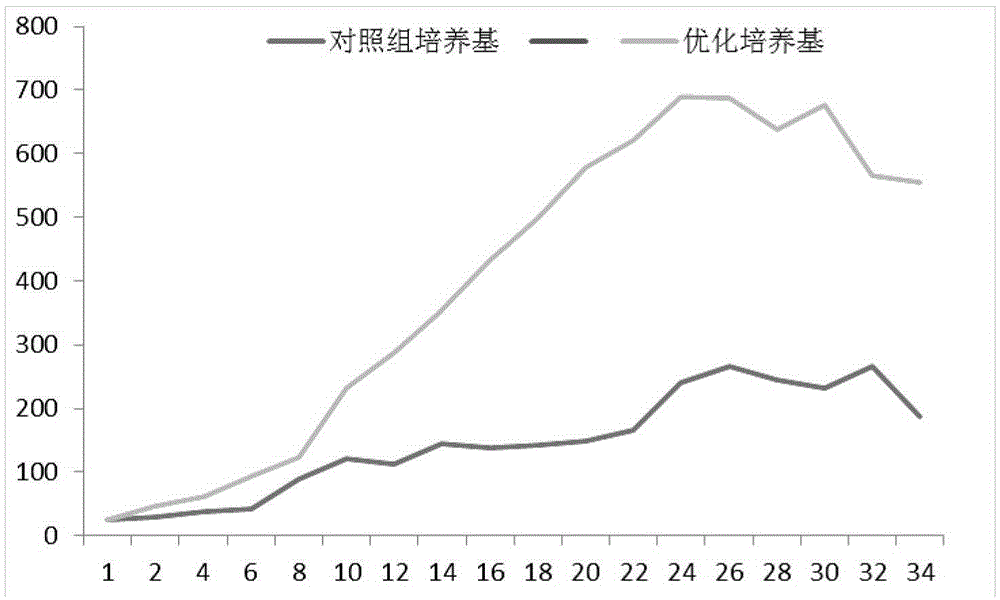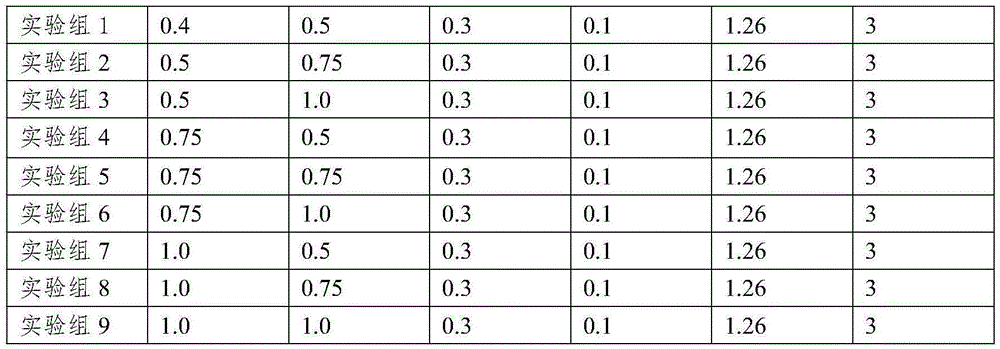A culture medium for luminescent bacteria
A culture medium and technology of luminescent bacteria, applied in the direction of bacteria, microorganism-based methods, microorganisms, etc., can solve the problems of unstable bacterial content, high cost, unfavorable experimental research and popularization of luminescent bacteria in liquid culture of luminescent bacteria, and achieve Conducive to promotion and application, low cost, and the effect of reducing research costs
- Summary
- Abstract
- Description
- Claims
- Application Information
AI Technical Summary
Problems solved by technology
Method used
Image
Examples
Embodiment 1
[0016] Embodiment 1 Contrast test of luminescent bacteria content and production cost
[0017] Prepare luminescent bacteria culture medium with different ratios for comparative experiments. The specific components of each experimental group are shown in Table 1:
[0018] Table 1: Components of the medium
[0019]
[0020]
[0021] The components in each of the above experimental groups were configured into 100ml of culture medium, and then used after high pressure. And 0.5g of tryptone, 0.5g of yeast extract powder, 0.3mL of glycerin, 0.1g of potassium dihydrogen phosphate, 1.26g of disodium hydrogen phosphate dodecahydrate, and 3g of sodium chloride were dissolved in 100mL of water to make a culture medium, as Control group, the components of the control group are currently used medium for the cultivation of luminescent bacteria.
[0022] Add samples to the culture plate, add 3 wells for each group of experiments, add 350uL of medium to each well, inoculate 7uL of sha...
Embodiment 2
[0026] The determination of embodiment 2 optimal culture conditions
[0027] Dissolve the freeze-dried powder of Vibrio fischeri with 3% NaCl solution, recover for 10 minutes, inoculate into 150mL optimized liquid medium (experimental group 2 in Example 1) in a 500mL Erlenmeyer flask, and culture at 180rpm 18h for enrichment. Inoculate the 1%, 1.5%, 2%, 3%, and 4% of the culture medium into 150mL culture medium in a 500mL Erlenmeyer flask, and incubate at 180rpm for 18h. The bacterial solution was diluted with 3% NaCl, and the colonies were counted, and the relative fluorescence intensity was measured.
[0028] Inoculate the recovered bacterium solution into the 200mL liquid medium (control group in Example 1) contained in the 500mL Erlenmeyer flask, the inoculum amounts were 1%, 1.5%, 2%, 3%, 4%, 25% respectively. Cultivate at 180rpm for 18h. The colonies were counted after serially diluting the bacterial solution with 3% NaCl solution, and their relative fluorescence inte...
Embodiment 3
[0032] The comparison of the luminous intensity of embodiment 3 luminescent bacteria
[0033] Add the inoculated two culture media into the luminometer, and dynamically measure the luminosity of the luminescent bacteria. The results are as follows: figure 1 shown. The results showed that the luminous intensity of the culture medium provided by the present invention continued to increase in the luminescence measuring instrument, while the luminous intensity of the control group was distributed in the range of 48-245. It can be seen that the culture medium of the present invention can ensure that the duration of luminous intensity of luminescent bacteria is extended.
PUM
 Login to View More
Login to View More Abstract
Description
Claims
Application Information
 Login to View More
Login to View More - R&D
- Intellectual Property
- Life Sciences
- Materials
- Tech Scout
- Unparalleled Data Quality
- Higher Quality Content
- 60% Fewer Hallucinations
Browse by: Latest US Patents, China's latest patents, Technical Efficacy Thesaurus, Application Domain, Technology Topic, Popular Technical Reports.
© 2025 PatSnap. All rights reserved.Legal|Privacy policy|Modern Slavery Act Transparency Statement|Sitemap|About US| Contact US: help@patsnap.com



